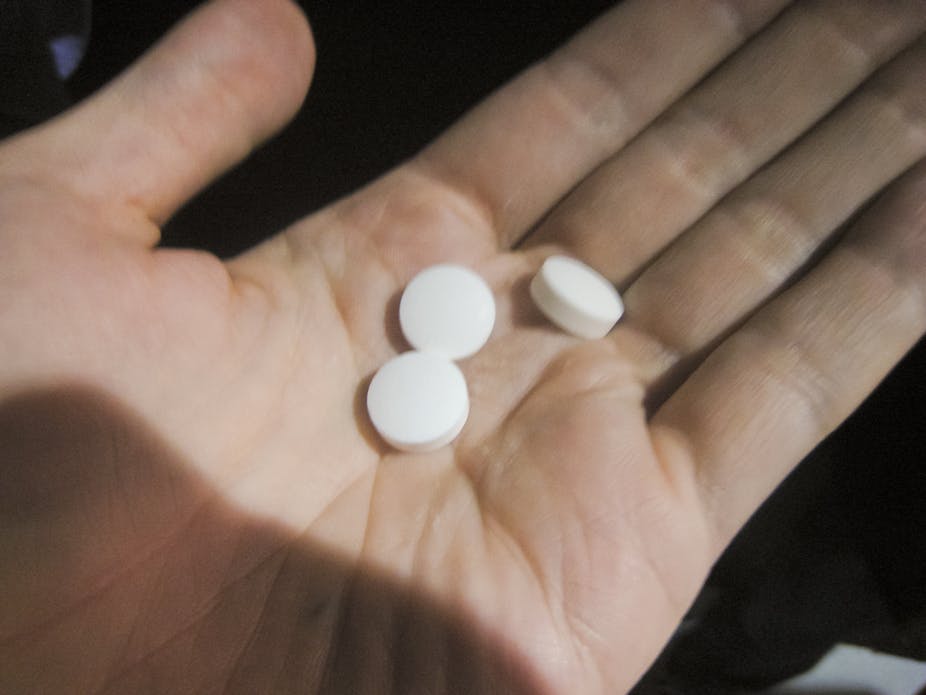“Smart drugs” and “steroids for the brain” are just two of the terms used to describe pills that students sometimes take in an attempt to improve their scholastic performance. The New York Times has recently added the term “good-grade pill” to the list, following allegations that an increasing number of American students are using stimulants.
The drug of choice appears to be Adderall, a mixed amphetamine salt pill used for the treatment of attention deficit hyperactive disorder (ADHD).
There’s nothing new about this – there’s a long history of amphetamine marketing and use beyond medical treatment. Nicolas Ramussen’s recent book In On Speed: The Many Lives of Amphetamines (New York University Press 2008), for instance, devoted two chapters to the use of Benzedrine sulphate as a treatment for apathy, lethargy and mild depression during the 1930s and 1940s.
But we don’t necessarily have to wade through history books to get some perspective on attempts to enhance our sense of self through pharmaceuticals. It’s been going on in sport for 50 years, where stimulants and steroids have been used to improve athletic performance.
Not only are the drugs often the same – amphetamines and other stimulants – they often raise the same questions. Front and centre are – do they work, are they addictive, are they damaging to health, and what should be the punishment for their use?
Our team at Victoria University’s Institute for Sport, Exercise and Active Living (ISEAL) and School of Sport and Exercise Science (SSES) is currently grappling with the many social, ethical, and policy problems the New York Times article uncovers.

The article makes a valuable contribution to debates about the problem of cognitive enhancement within academia and performance enhancement within sport. It also provides a good follow-up to a 2008 article in the prestigious science journal, Nature, in which the authors provocatively suggested that enhancing pharmaceuticals should be made available to healthy individuals in certain circumstances.
The New York Times article highlights something very important that’s often forgotten in much of the esoteric ethical discussions surrounding cognitive enhancement – Adderall is a Schedule II stimulant drug according to the US Drug Enforcement Administration (DEA) classification, which makes it illegal to possess without prescription. It’s also illegal to trade it and what’s being described in the article is essentially dealing and illegal possession.
Students or their parents knowingly faking symptoms or rehearsing statements to get hold of such drugs are actually committing a criminal offence. Sport has adopted a similar approach with the World Anti-Doping Agency (WADA) being set up to catch offenders by randomly testing, even where there’s no suspicion that a so-called crime against sport has been committed.
But the article has a libertarian tone, and is clearly not promoting a punitive response to such activity. It’s also hinting that parents, teachers, and, maybe even future employers, are comfortable with the notion of substance-enhanced achievement. At the same time, it concedes that the nearly-brilliant are being pushed to be the elite at whatever the costs – financial, psychological, and physical.

This all looks frighteningly familiar to the pressure faced by athletes, and is perhaps an indication that society is asking too much of the new generation of students in the same way that it has asked too much of its athletes. Alternatively, it may be that we are doing nothing more than inviting young people to do whatever they think is reasonable to achieve their very best.
In all the panic surrounding smart pills, the New York Times raises many insightful questions about deep-seated values and complicity, but also calms the debate down by citing national statistics on drug use, suggesting that the levels of stimulant abuse are not rising substantially.
Claims suggesting that drugs are over-running society, or that every successful academic or sportsperson must be on drugs, can become a source of peer pressure and, by precipitating an increase in use, can actually deliver the wildly exaggerated outcome that was predicted in the first place.
Most importantly, a detailed examination of both cognitive and sports enhancement shows little to suggest that amphetamine drugs actually do much more than dummy pills when taken by already highly motivated adults.
Indeed, the real problem of drug use to enhance cognitive performance may not be a moral, legal, or harm-related one. It may simply be a matter of economics. If it doesn’t work, then the utility of using it may fall well below the cost of securing it. And that’s not a good outcome for either individuals or society as a whole.

